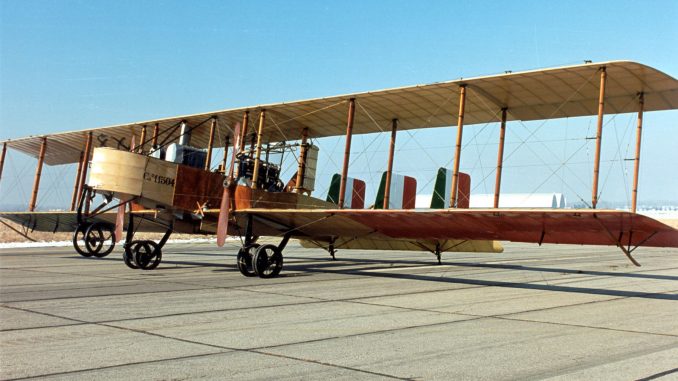
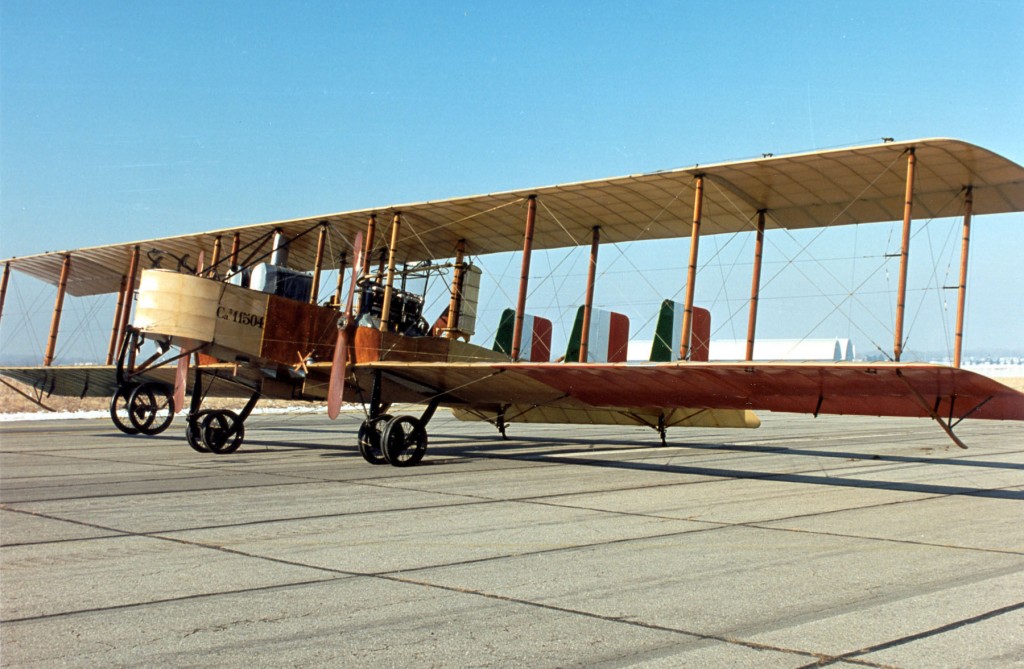
(Image Credit: USAF)
In a project that began in 2009, Giancarlo Zanardo’s Jonathan Collection has taken on its most ambitious project to date, the recreation of an airworthy Caproni Ca.3. Already boasting a collection of notable warbirds with a particular focus on WWI, Zanardo seeks to invigorate interest in Italians in the rich aviation history of their country by returning to the sky, the aircraft that played a pivotal role in aviation history in the first half of the 20th Century, even staging (unusual for Italy) war reenactments in furtherance of their educational goals.
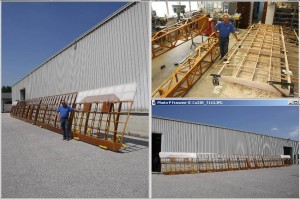
(Image Credit: P. Franzini)
The Caproni Ca.3, alternately known as the “Caproni Ca.33” and “Caproni 450 hp”, the latter referring to the horsepower of the craft’s engines, was a heavy bomber of World War I and the inter-war era, continuing in military service straight through to the Italian conquest of Ethopia in 1935. The Ca.3 is considered as the ultimate development of the series of aircraft that began with the 1914 Caproni Ca.1 and was a successful design fielded by both the Italian Air Force and Navy as well as the Royal Air Force, Argentine Air Force and both originals and license-built French editions of these heavy bombers were used by the French and the aviators of the American Expeditionary Forces in World War One.
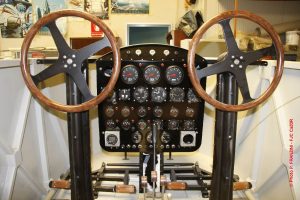
(Image Credit: P. Franzini)
The Ca.33R will be the biggest aircraft yet built by Giancarlo Zanardo and the Jonathan collection though they have already proved their technical prowess building airworthy replicas of the Wright Flyer, Fokker DR.I, and a Bleriot XI as well as constructing more modern craft. In getting this project off the ground, so to speak, the group restored several original Ca.3 parts (a wing section, a tail boom, a rudder and other components) that belonged to various other Italian collectors. The restoration of original components allowed Zanardo and his team to complete drawings to accurately reflect the original’s dimensions and configuration and allowed close examination and analysis of the assemblies to accurately reproduce the materials and construction methods utilized a nearly a century ago when these were among the most formidable aerial war machines, able to carry heavy bomb loads and bristling with up to four 7.7 mm machine guns.
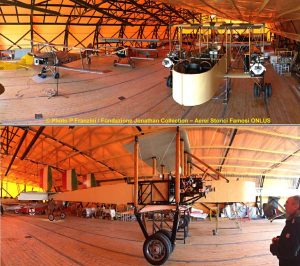
(Image Credit: P. Franzini)
At his point in time, the project is well along, and after years of hard work Zanardo’s team has completed the airframe construction on the gargantuan and complex craft, including the main nacelle that serves as the cockpit, tricycle landing gear, both five-section, 74′ 7″ wings, the twin tail booms and the complex tail section that consists of the tailplane, elevators and three vertical stabilizers. Three antique 1930 Ford 300 inline-six engines rated at 170hp each have been installed, driving, as in the original, two blade wooden propellers. The group has well over 10,000 manhours invested in the plane so far and as of the beginning of this month, the propellers have been installed and the crew is testing the engines and fine tuning the propellers’ profiles.
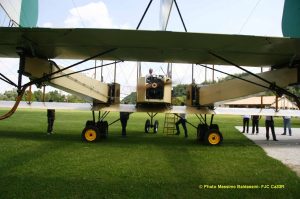
(Image Credit: Massimo Baldassini)
The Italian civil aviation authority has officially assigned to this project the designation of “Caproni Ca.3 Replica (c.n. 06/09)” and the civilian registration ID “I-ZANA.” It seems like this plane will soon be in the air, yet another aviation triumph added to Zancarlo’s long list of achievements. Though one wonders what’s next for the Jonathan Collection. What could possibly top resurrecting one of the biggest planes of it’s day? We would humbly submit a challenge worthy of Giancarlo and his team’s ample skills: The Caproni Ca.60 Noviplano, a plane intended to carry 100 passengers, boasting nine, nearly 100 foot wings and eight Liberty L-12 V12 400Hp engines. Caproni himself only managed to get a single short flight in before it had a non-fatal crash, then despite publically vowing to make it fly again, he later burned it to the ground. Now THAT’S a worthy challenge.
We’ll keep abreast of the construction of I-ZANA as she progresses, and keep you informed of the latest developments in the return of this landmark plane to the sky.


2 Trackbacks / Pingbacks
Graphic Design, Branding and Aviation Art